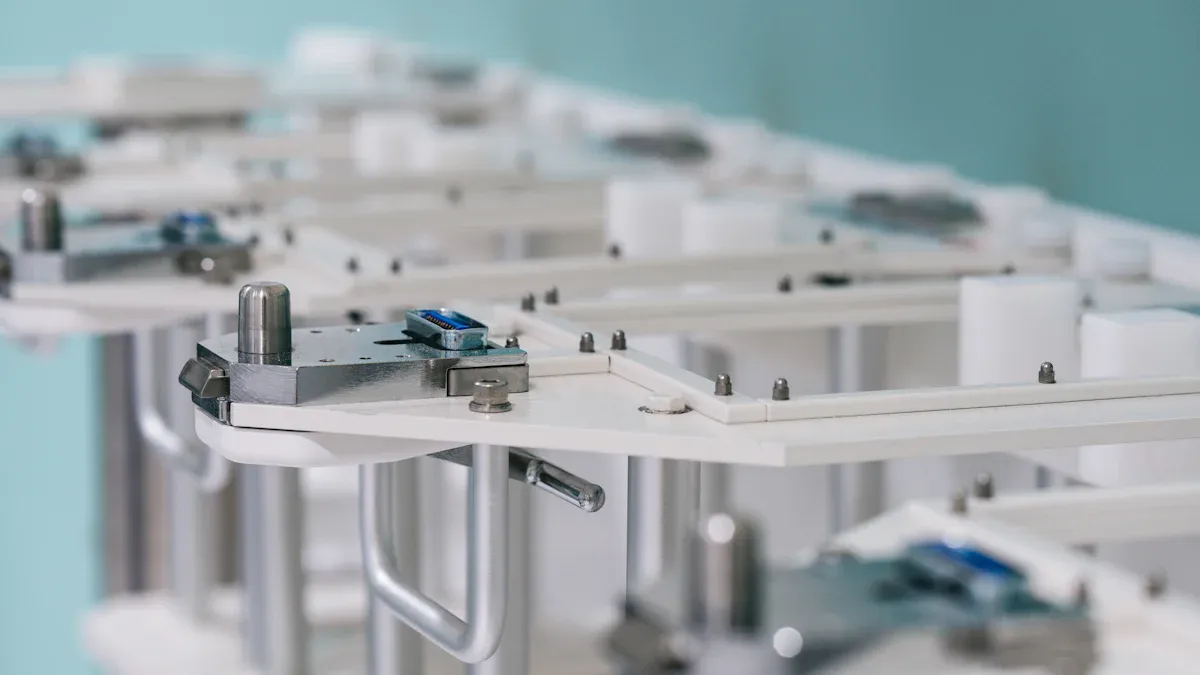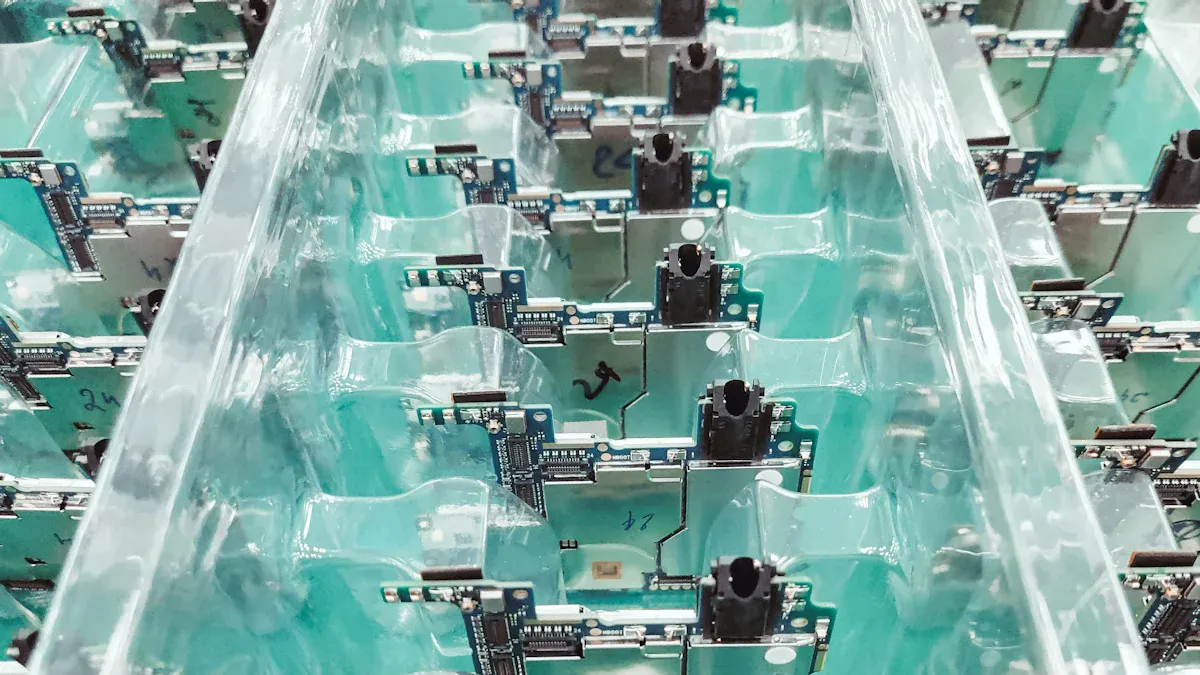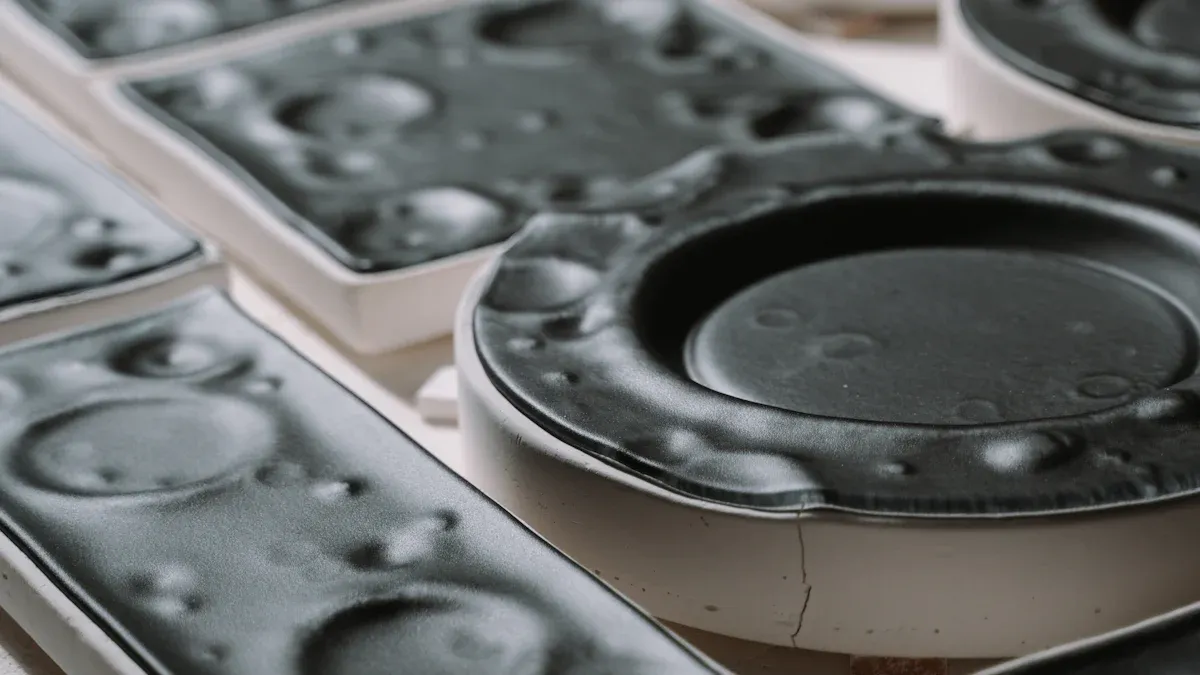
Short shots occur when the mold cavity experiences incomplete filling during thin-wall injection molding. This defect compromises product quality and efficiency. For instance, optimizing parameters like melt temperature and injection speed reduced short-shot defects by 2.3%. Proper adjustments also improved product weight consistency, with averages reaching 8.8 grams under ideal conditions. Addressing these issues ensures better outcomes.

Material flow plays a critical role in thin wall injection molding. When the molten plastic fails to flow evenly, it can lead to short shot plastic defects. Common issues include flow lines, weld lines, and incomplete filling of the mold cavity. These defects often arise due to uneven mold temperature or insufficient injection pressure. For example, flow lines appear as waves on the surface, indicating weaknesses in the part structure. Weld lines, on the other hand, form when molten plastic meets but does not bond completely, compromising both aesthetics and strength. The table below highlights these challenges:
| Defect Type | Description | Impact on Material Flow Challenges |
|---|---|---|
| Flow Lines | Waves or lines on the surface due to uneven molten plastic flow. | Indicates potential weaknesses in the part structure. |
| Weld Lines | Seams formed when molten plastic meets but does not bond completely. | Can compromise the aesthetic and structural integrity. |
| Short Shots | Occurs when the mold is not completely filled with plastic. | Directly affects the quality and functionality of parts. |
To minimize these challenges, you should ensure proper material flow by maintaining consistent temperatures and optimizing injection pressure.
Mold design flaws significantly contribute to short shot injection molding. Poorly designed molds can restrict the flow of molten plastic, leading to incomplete filling. Key design-related metrics include wall thickness, gate size, and venting effectiveness. Thin walls or small gates can hinder the flow of material, while inadequate venting traps gases, causing defects. Additionally, if the equipment used is not suitable for the material's flowability, short shot defects become inevitable. Addressing these mold design flaws requires collaboration with skilled designers and careful evaluation of critical parameters.
Improper machine settings often result in injection molding short shots. Low injection pressure or speed prevents the mold cavity from filling completely, especially in thin-walled or complex-shaped parts. Insufficient melt or mold temperatures can cause the material to solidify too quickly, leading to short shot plastic defects. Other common issues include incorrect shot size or cushion settings, which result in inadequate material being injected. To avoid these problems, you should regularly monitor and adjust machine settings. Key performance data shows that:
By optimizing these settings, you can reduce the occurrence of short shot injection molding defects.
Errors in process parameters can also cause short shots in thin wall molding. Parameters such as injection speed, pressure, and temperature must be carefully controlled. Uneven mold temperature is a common issue that leads to inconsistent material flow. For instance, if the mold temperature is too low, the plastic may solidify before filling the cavity. Similarly, poor plastic material selection can exacerbate these issues, as some materials require specific conditions to flow properly. Regular testing and monitoring of process parameters can help you identify and correct these errors, ensuring consistent results.
Choosing the right material is crucial for preventing short shot plastic defects. Poor plastic material selection can lead to flowability issues, brittleness, or dimensional instability. For thin wall injection molding, the material must have high flowability, impact strength, and heat resistance. The table below outlines key material selection metrics:
| Metric | Description |
|---|---|
| Flowability | The fluidity of the plastic should be good, with a flow distance to thickness ratio (l/t) > 150. |
| Impact Strength | Notched Izod value (ASTM D256A) should be 640 J/m or higher for rigidity. |
| Heat Deflection Temperature | Material should remain stable at temperatures from 70°C to 95°C. |
| Low-Temperature Impact Rigidity | Must maintain rigidity in low temperatures to prevent brittleness. |
| Dimensional Stability | Should have good dimensional stability to avoid significant size changes after molding. |
Selecting materials that meet these criteria ensures better performance and reduces the risk of short shot injection molding defects.
Improving material flow is essential to prevent short shots in thin wall injection molding. When the polymer melt flows smoothly, it fills the mold cavity completely, reducing the risk of defects. You can enhance material flow by optimizing the gating system and ensuring consistent mold temperature control. For instance, adding vent grooves or holes improves ventilation, allowing trapped gases to escape and enabling the melt to flow freely.
Tip: Preheating the mold and maintaining a high injection speed ensures the melt fills the cavity before cooling prematurely. This approach is especially critical for thin-walled parts, where the condensation layer formed during cooling can hinder flow.
Enhancing material flow also improves the interaction between the polymer melt and the cavity wall. This interaction ensures better filling and cooling, leading to higher-quality molded parts. By focusing on these adjustments, you can achieve significant performance improvements in your injection molding process.
A well-designed mold plays a crucial role in reducing short shot defects. You should collaborate with experienced mold designers to address common issues like narrow gates, trapped air pockets, and insufficient injection pressure. The table below highlights some common mold design problems and their solutions:
| Cause of Short Shots | Solution to Prevent Short Shots |
|---|---|
| Narrow or blocked gates | Increase mold temperature and incorporate venting |
| Trapped air pockets | Allow air to escape properly |
| Insufficient injection pressure | Adjust injection pressure as needed |
Refining mold design also involves ensuring proper gate balance and proportionality in multi-cavity molds. This adjustment prevents uneven filling and ensures that all cavities receive the correct amount of material. By addressing these design flaws, you can significantly reduce the occurrence of short shot defects.
Incorrect machine settings often lead to short shots in thin wall injection molding. You can mitigate these issues by carefully monitoring and adjusting key parameters like injection speed and pressure control. For example, increasing injection pressure ensures the mold cavity fills completely, while optimizing injection speed prevents premature cooling of the melt.
By fine-tuning these settings, you can minimize injection molding defects and improve the overall efficiency of your process.
Controlling process parameters is another effective way to address short shots. You should focus on maintaining consistent injection speed, pressure, and mold temperature. Uneven mold temperature can cause the melt to solidify too quickly, leading to incomplete filling. Preheating the mold and maintaining appropriate melt temperatures can prevent these issues.
Note: Regularly testing and monitoring process variables helps you identify and correct errors early, ensuring consistent results.
Adjusting process parameters also involves ensuring uniform material supply. Using plastic particles of consistent size and maintaining proper feed port temperature can prevent feeding issues. These adjustments contribute to a smoother injection molding process and reduce the likelihood of short shot defects.
Selecting the right material is critical for minimizing short shots. The material must possess the necessary physical and chemical properties to ensure proper flow and structural integrity. For thin wall injection molding, materials with high flowability, impact strength, and heat resistance are ideal. The table below outlines some commonly used materials and their suitability:
| Material | Description |
|---|---|
| P20 Steel | Commonly used but may not withstand higher pressures in thin-wall molding. |
| H-13 Steel | Recommended for its robustness and ability to handle high wear and erosion. |
| D-2 Steel | Effective for gate inserts in aggressive thin-wall applications. |
You should also consider the cost-effectiveness of the material. While high-performance materials may have a higher upfront cost, they often result in fewer defects and lower maintenance expenses in the long run. By choosing the best material for your application, you can enhance the quality of your molded parts and reduce the risk of short shot defects.

Regular equipment maintenance ensures consistent performance during thin wall injection molding. You should inspect critical components like screws, barrels, and nozzles for wear and tear. Cleaning these parts prevents material buildup, which can obstruct flow and lead to short shot defects. Calibration of injection pressure and speed settings also plays a vital role in maintaining process efficiency.
Tip: Schedule routine maintenance checks to identify issues early and avoid costly downtime. A well-maintained machine reduces troubleshooting time and improves product quality.
Working closely with mold designers helps you address design flaws that contribute to short shots. Designers and engineers can collaborate to optimize venting, runner, and gate designs. For example, integrating vents in strategic locations prevents trapped air from obstructing material flow. The table below highlights common mold-related issues and their remedies:
| Category | Causes | Remedies |
|---|---|---|
| Mold Design | Insufficient venting causing trapped air to obstruct flow. | Integrate strategically positioned vents to evacuate air pockets effectively. |
| Suboptimal runner and gate design reducing melt delivery efficiency. | Redesign runners and gates to reduce flow restrictions and balance cavity filling. | |
| Mold Manufacturing | Inadequate surface finish increasing frictional resistance. | Ensure high-precision machining and polished surfaces to facilitate smooth flow. |
| Misaligned mold components impeding proper cavity filling. | Maintain rigorous alignment tolerances during mold assembly to avoid disruptions in flow. |
Collaborating with mold designers ensures better mold functionality and reduces the risk of defects during injection molding.
Testing and monitoring process variables help you maintain consistency in thin wall injection molding. Key parameters like injection pressure, melt temperature, and mold temperature must be regularly checked. Conducting mold flow analysis allows you to identify potential obstructions and optimize the process.
By monitoring these variables, you can prevent defects and improve the efficiency of your molding process.
Skilled operators play a crucial role in ensuring successful thin wall injection molding. Training programs should focus on machine operation, process optimization, and defect identification. Operators must learn to adjust injection settings and troubleshoot issues effectively.
Note: Continuous skill development keeps operators updated on the latest techniques and technologies, reducing errors and improving productivity.
Investing in operator training enhances process reliability and minimizes the occurrence of short shot defects.
Understanding the causes of short shots and applying effective solutions ensures better results in thin wall injection molding. Prevention starts with systematic troubleshooting tips for common thin wall molding issues. For example, a medical syringe manufacturer reduced defects by 40% by switching to low-viscosity material. Best practices improve efficiency and reduce rejections, as seen in automotive lighting production.
Uneven material flow is the most common cause. It happens when the molten plastic cannot fill the mold cavity completely due to low pressure or poor design.
You can add vent grooves or holes to the mold. These features allow trapped air to escape, ensuring the molten plastic flows smoothly and fills the cavity.
Materials with high flowability, such as polypropylene or ABS, work best. They ensure proper filling of the mold cavity and maintain structural integrity in thin-walled parts.